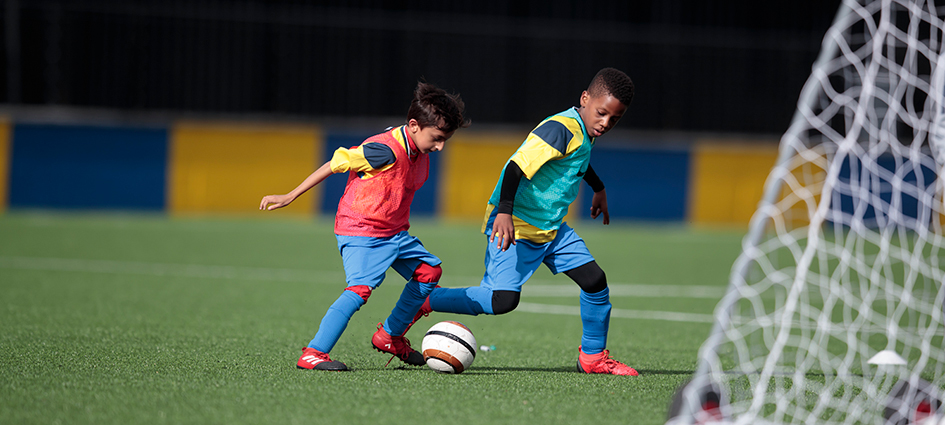Start your journey

Player creativity
- The Boot Room
- 27 November 2019
The England DNA stresses the need to develop creative players, but to nurture this ability in each individual, it’s important to build the right environment for them first.
There’s no doubt that young children are ready for their creative abilities to be released, so the better you understand your players’ needs, the greater the chance you can maximise this development.
The research around the development of creativity (certainly in an educational setting) identifies a number of elements that need to be in place so that creative returns are increased. This includes:
- valuing children’s decisions, motivation and engagement
- building in time for reflection
- encouraging children to believe in their creative identity
- developing curiosity (present opportunities to be creative)
- making the learning relevant and interesting
- letting the children own more of the knowledge
- creating a good social relationship between the teacher (coach) and the pupil (player).
What kind of environment have you created?
Creativity can develop in an environment that poses questions, includes plenty of opportunities to play, involves the learner in the task and encourages innovation, imagination, self-determination and risk taking. These should be some of the benchmarks that you use to measure your coaching sessions and development programmes.

To what extent should players be encouraged to take risks?There is a danger that, without careful encouragement and support, players will always look for the easy option. Of course, this is sometimes the right thing to do – but it’s better to help players understand and manage risk.
How often do you allow time for problems or challenges to be considered, so that the reasons why things may not work are discovered and successful solutions can be created?
It’s important to recognise that, in some instances, the longer route can prove to be the most productive, and time spent there can reap many benefits later on. The Foundation Phase is perfect for this approach.
When profiling your young players, it’s worth knowing that Seltzer (1999) identified the following key qualities of the creative learner:
- The ability to identify new problems rather than depending on others to define them.
- The ability to transfer knowledge gained in one context to another, in order to solve a problem.
- A belief in learning as an incremental process – repeated attempts will eventually lead to success.
- The capacity to focus attention in pursuit of a target.
Got any of these in your group?
The skills needed by coaches in the Foundation Phase must be related to the identification and development of these creative characteristics (both in the players and in themselves). This may be very difficult because much of our football ‘culture’ is built around the role and position of the coach as one that holds all of the knowledge and all of the power.
Changing this to an environment that embraces choice, freedom and more player ownership is difficult, but if things are to change then it has to be considered.
To learn more about Foundation Phase DNA, click here.




















